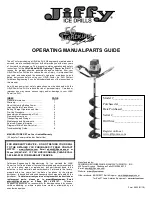
any point east. If you chose the second of the two your task can be made out much easier. For
example, if you were working on a dock in a harbor you can make one end “north” and another
“east” so that when the image is overlaid in SeaFloor the dock forms a right angle. By doing so, this
gives the user a simple way of explaining to someone in the water where he is or needs to be.
GPS Integration
In DiveBase SeaFloor we use the GPS integration and a heading sensor to get geo coordinates
rather then just baseline relative positions. That just means that you have the ability to reference
your trace to “Real World” coordinates rather then just your baseline survey; therefore, SeaFloor can
be used in any application that the goal is to reference an area to an actual map of the area itself. By
defining the area with the Chart Registration you can further understand the overall value of GPS
Integration because you can see its effects. Remove the map and your reference is only to the
baseline survey, but add the map and your reference changes to a “Real World” survey.
Position Data Export
You have the utility available to export the position data into another charting software. There are
four different methods available, but the most common one is serial output. This is by far the most
commonly used, and is the standard method for connecting to another piece of software, such as
Hypack or Winfrog. When doing so you must select a com port and baud rate from the Options
Menu on the main menu bar. The output format used depends upon what you are doing with it. The
other thing you have to do is select an output format, we currently support 6 formats.

































